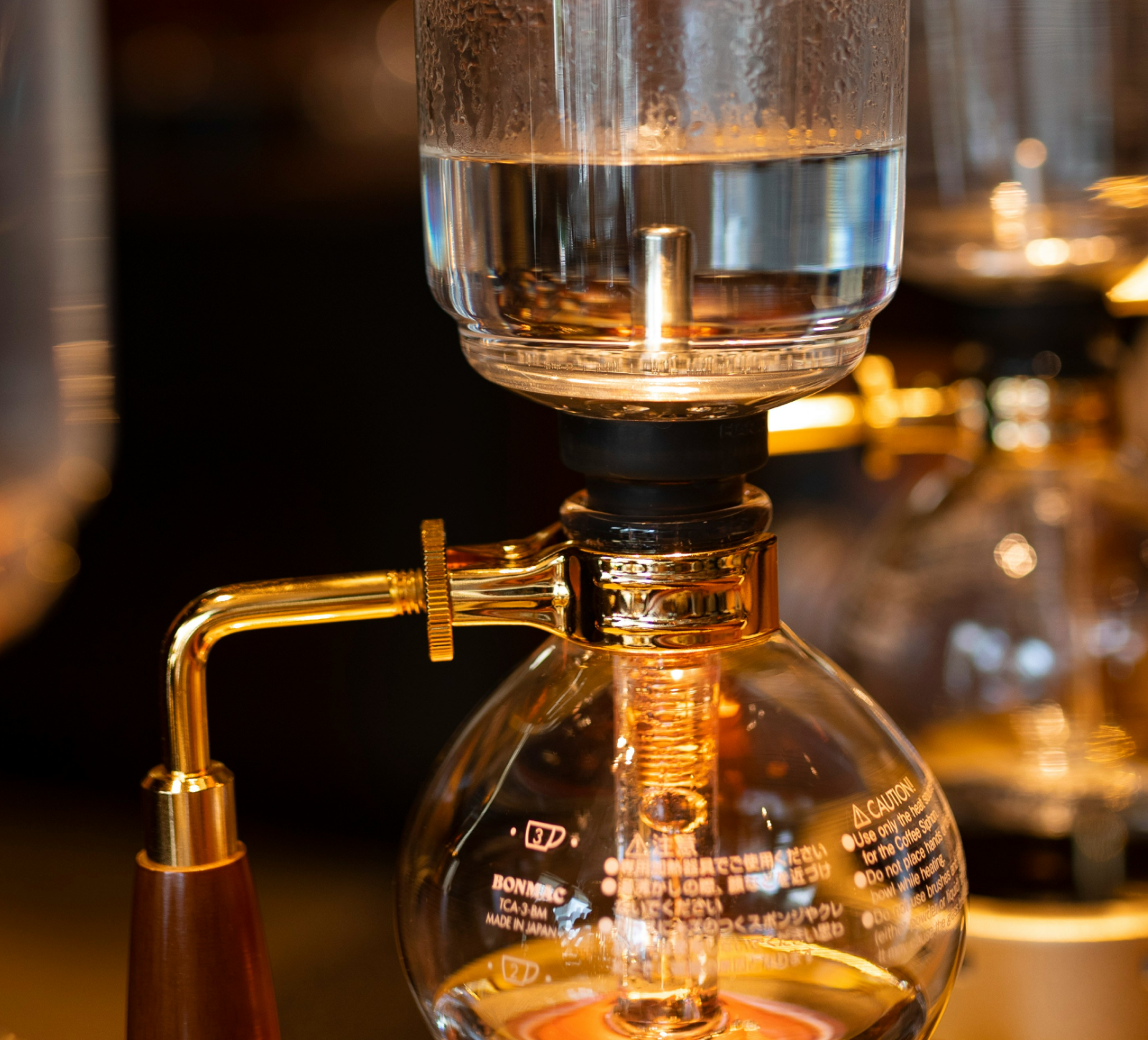Siphon coffee is enjoying a resurgence in popularity among coffee enthusiasts. Fans of this brewing method believe it preserves flavor and complexity by slowly heating and brewing the coffee. But what is siphon coffee, and how is it made? We're here to explain everything.
What Is Siphon Coffee?

Siphon coffee is made using a vacuum pot. Compared to some other coffee brewing techniques, this way of making coffee can seem complicated at first, but once you're used to using the vacuum pot, it's a simple process that's enjoyable to watch and produces a great tasting coffee.
Siphon brewing isn't a new idea, although it's something that's come back into fashion recently. The earliest recorded patent for a vacuum coffee maker was filed in the 1830s, although the idea wasn't popularized until slightly later.
In 1856, a marine engineer from Scotland made a commercial vacuum coffee brewer known as the Napier Coffee Pot, which earned recognition from the Institution of Mechanical Engineers. Other similar devices were developed independently in other parts of the world.
The taste of vacuum-brewed coffee is one of the reasons it's popular, but another reason is the joy in the process itself. Many siphon brewers have an ornate appearance, and the process itself is almost theatrical, turning coffee brewing into a hobby and something of a science experiment.
When compared to a more commonly-used brew method like a French press or a dripper, siphon coffee-making can be intimidating. However, it's something anyone can master with practice!
How Is Siphon Coffee Made?
The siphon coffee-brewing process uses a device called a vacuum pot. These can be stovetop devices or devices that have their own heat source, allowing them to brew at the table. This option is great for coffee enthusiasts who like to show off the brewing process when entertaining guests.
To use a vacuum pot:

It's this two-chamber design that makes the siphon brewing process unique. Instead of incrementally pouring water over the coffee to brew, the bottom chamber is heated, creating a change in pressure that forces the water to rise into the upper chamber with the coffee grounds. A combination of gravity and a fall in pressure causes the water to fall and pass through a filter back into the bottom chamber.
The first stir of the water just before the coffee is added is an important part of the brewing process because it ensures even saturation of the coffee grounds. The first stir should be vigorous to help the water soak all of the grounds and promote even extraction. The second stir should be gentler because this one is intended to help the coffee degas, acting like the “bloom” in a pour-over. A bloom helps the coffee’s flavors taste defined in the final cup.
If you've stirred the coffee correctly, you'll see a dome of coffee grounds form at the bottom of the upper chamber. The dome will have larger coffee particles at the bottom.
Caring for Your Vacuum Coffee Maker
After using a vacuum coffee maker, dismantle it and make sure all sections are properly rinsed out. Cloth filters are optional, and some people opt for disposable filters instead. Using cloth filters has the benefit of increased sustainability, however cloth will soak up more of the coffee’s oils — a main contributor in coffee’s overall flavor — than paper will, resulting in a more mellow cup of coffee, generally speaking.
Note that if you opt to use a cloth filter instead of a paper filter, it's vital to ensure the filter is properly cleaned and completely dried after use. Otherwise, the filter could become moldy, presenting a health hazard and also ruining the taste of the coffee.
To keep the cloth filter clean, rinse it after use, and squeeze out as much water as possible before storing it in a small amount of clean water in the fridge. Every five uses or so, you’ll want to use a mild detergent to clean. Put your filter in a small bowl of warm to hot water with a small amount of Cafiza (or equivalent coffee machine detergent) and soak for 20-30 minutes. A little coffee cleaner goes a long way! Make sure to rinse thoroughly after. If you don’t use your siphon very often, wringing out your filters to store in an enclosed container in your freezer is advisable. Make sure to run hot water through the filter before using it again!
How Siphon Brewing Impacts Extraction

Siphon brewing is an immersion brewing method. Therefore, the coffee is in full contact with the water during the extraction process. Unlike many other immersion brewing methods, however, siphon brewing produces a specific mouthfeel known in Japanese as "torotoro" (roughly “syrupy”). This is a texture that's smooth and slightly thicker than water.
The mouthfeel comes from both the vacuum and the use of filters during the brewing process. The filter prevents grounds from being included in the final product, and the vacuum process ensures the coffee evenly extracts and brews.
The brew time for a siphon coffee is a little longer than some other brewing methods, but it's worth the wait for the smooth, clean taste.
Choosing the Best Coffee Beans for Siphon Coffee
Most beans work well with vacuum coffee makers, as long as they're fresh. A good grinder will allow you more control over grind size so you get a more consistent yield. A medium grind is recommended to promote proper extraction.. The brewing process ensures the flavor and notes of the coffee truly get to shine through.
We offer a variety of coffee beans suitable for use in different coffee brewers. Our selection includes a number of medium roasts with rich flavors, as well as collections and box sets to allow coffee lovers to try interesting new offerings in tandem. Explore our coffee offerings today and pick out the perfect beans for your siphon brewing adventure.





















